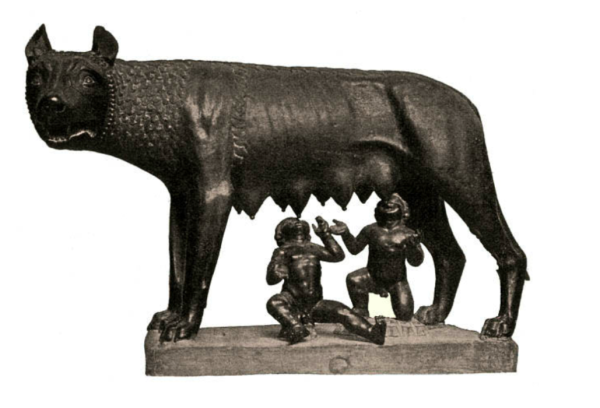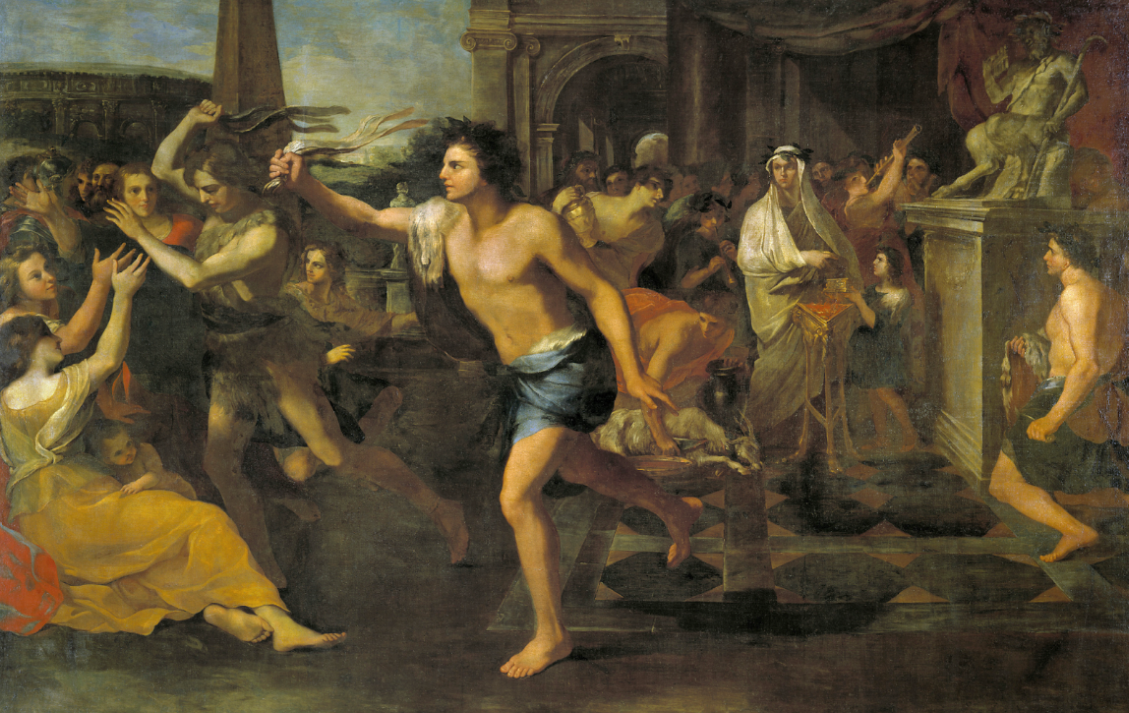Emboldened by the three clicks (thank you, Mom, Dr. M, and Mom again!) that my article on the ancient pagan Festival of Saturnalia received in Spyglass’s last edition, I am going to continue my quest to slake the Westridge community’s thirst for in-depth coverage of orgiastic Roman festivals. This month, I’m exposing—literally—the scandalous secrets of Lupercalia, Valentine’s Day’s provocative progenitor. Come on, take a break from front-loading AP Bio lab revisions (ha) and working ahead on your Poetry Anthology (double ha), and join me in the murky annals of history, where the overpriced roses and drugstore chocolates of Valentine’s Day Present dare not tread.
We love to hate Valentine’s Day. We deride it as a pseudo-holiday, a saccharine-sweet, commercial cash grab created by florists and the greeting card industry. We suspect that it is a plot by the patriarchy to keep us pacified, distracted, and docile in the hopes of one day achieving the impossible dream of Instagram-worthy Valentine’s Day coupledom. Actually, the sane and sanitized holiday we know (and don’t always love) emerged from the primordial soup of the past, blending elements of the bloody, sexy, raucous Roman festival of Lupercalia with the Christian feast day of St. Valentine that replaced it, and earning shout-outs from Chaucer and Shakespeare along the way.

To begin at the beginning, back in the good old days of BCE Rome, February 13–15 marked the annual three-day Lupercalian blow-out. The festival celebrated Lupercus, the ancient god who protected sheep from wolves and bestowed gifts of fertility on humans and livestock. It also honored the she-wolf that famously suckled Rome’s founding twin brothers Romulus and Remus. (Point to ponder: “lupa” means both she-wolf and prostitute in Latin . . . )
To kick off the festivities, the Luperci, an order of Roman priests, sacrificed goats—symbolic of male sexuality—and a dog. Goat entrails were roasted on spits and enjoyed by festival-goers, easily beating out even modern-day fried Twinkies as history’s most disgusting example of fair food. The goat hides were cut into bloody, hairy thongs that the Luperci, naked and oiled (!?!), used to playfully flog female festival-goers. Believing that the lashes portended fertility, women vied to get slapped and spattered with the gory thongs. Yes, alcohol was involved, and no, PETA was nowhere to be found.

Next up on the Lupercalian agenda was the ancient Roman equivalent of “spin-the-bottle.” Celebrants that were single and ready to mingle drew names out of a jar to form couples that…coupled for the duration of Lupercalia. Unfortunately for the romantic prospects of the Roman youth, however, the names of martyred saints eventually replaced the names of potential love matches in the jar as the Roman Empire adopted Christianity. By the time Pope Gelasius finally outlawed its pagan rituals in 494 C.E., licentious Lupercalia had transformed into a comparatively sedate feast day for St. Valentine, a third-century priest who was beheaded by the pagan Emperor Claudius II on February 14, 269 CE for performing Christian marriages in secret. In other words, the three-day Lupercalian free-love fest cleaned up its act and became a religious celebration of a man martyred for promoting Christian matrimony.
THE FIRST “VALENTINE”: While awaiting execution in prison, St. Valentine converted the blind daughter of his jailer to Christianity. Through the power of St. Valentine’s prayers, her blindness was healed. Before he was beheaded, the priest wrote the girl a last note of encouragement and affection, signing off with the words, “From your Valentine”.
Over the years, the ideals of matrimonial love and devotion associated with St. Valentine and the flirty folk traditions of Lupercalia combined to make February 14 a day for lovers. Chaucer’s 1382 “Parliament of Fowls” (or “Parlement of Foules,” in ye olde English) waxes satirically poetic about birds choosing their mates on St. Valentine’s Day, while Shakespeare helped fan the flames of romance around V-Day with mentions in “Hamlet” and “A Midsummer Night’s Dream.” Beginning in the Middle Ages, handmade paper cards were exchanged as love tokens in England and Europe which eventually became mass-produced valentines, first manufactured by the Hallmark Cards Company of Kansas City, MO in 1913.
Depending on your perspective, the Pepto-pink world of cheesy heart-shaped jewelry, oversized teddy bears, and PDA that characterize modern Valentine’s Day might actually be more horrifying than the animal sacrifice/goat-thong-flogging elements of Lupercalia of yore; I don’t disagree that Valentine’s Day has become a capitalist conspiracy, and Lupercalia isn’t my cup of ambrosia, either. Let’s bring back the Valentine’s Day of the Middle Ages that the Bard and Chaucer so elegantly endorsed, when handmade cards were still exchanged. Who’s with me?




























![Dr. Zanita Kelly, Director of Lower and Middle School, pictured above, and the rest of Westridge Administration were instrumental to providing Westridge faculty and staff the support they needed after the Eaton fire. "[Teachers] are part of the community," said Dr. Kelly. "Just like our families and students."](https://westridgespyglass.org/wp-content/uploads/2025/03/dr.-kellyyy-1-e1748143600809.png)





























